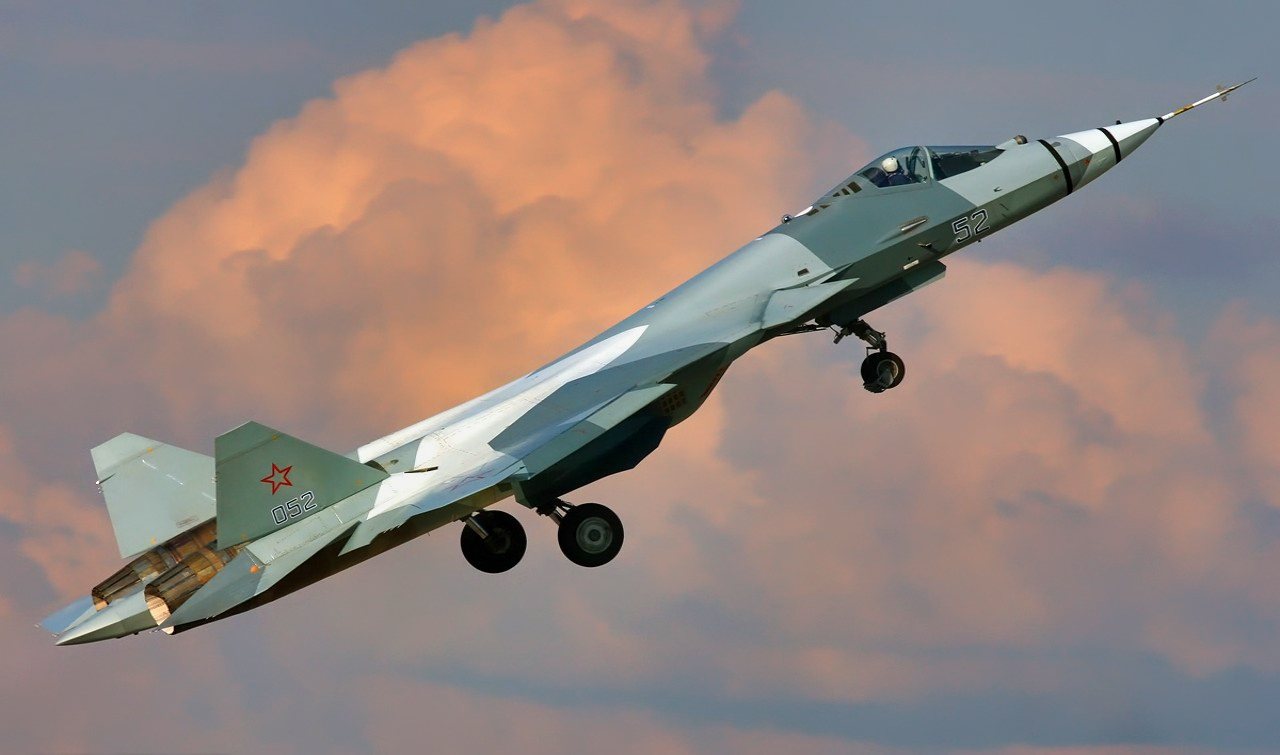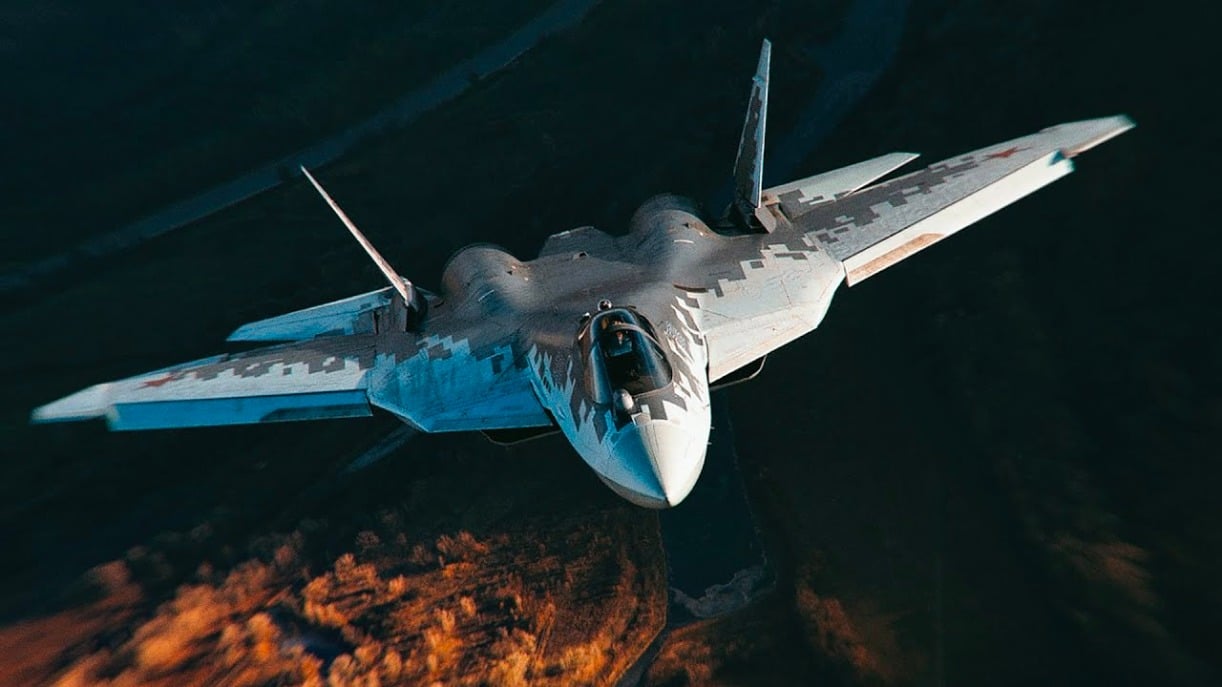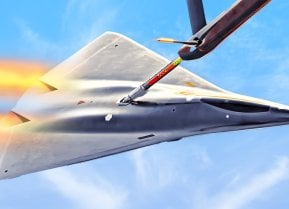Russia's Su-57 Felon Fighter Can Be Explained in 2 Not So Great Words
Western sanctions have stifled Russia’s production of the Sukhoi Su-57, its fifth-generation stealth fighter, by restricting access to essential Western-manufactured components.
Two Words That Describe the Su-57: Total Failure? Western sanctions have stifled Russia’s production of the Sukhoi Su-57, its fifth-generation stealth fighter, by restricting access to essential Western-manufactured components.

-Internal leaks reveal Russia’s reliance on restricted items like the MPPU-50 calibration modules and Siemens KLE 360 CNC machines, which are crucial for radar and production efficiency. Despite attempts to circumvent sanctions by obtaining parts from intermediaries in China and Kazakhstan, Russian aerospace remains hindered.
-This situation underscores the U.S. defense industry’s reliance on international partnerships for aircraft like the F-35, which Russia lacks, highlighting the importance of supply-chain security for sustained military production.
Western Sanctions Threaten Russia's Su-57 Felon Fighter Production: Here’s Why
Western-imposed sanctions that went into effect after Russia launched its unprovoked invasion of Ukraine in February 2022 remain very much in place, and according to a recent report from Ukrainian open-source military analytics group Frontelligence Insight, it could impact the production of the Sukhoi Su-57 (NATO reporting name Felon).
The Kremlin has touted the fifth-generation stealth fighter as being on par with the U.S.-produced Lockheed Martin F-35 Lightning II. Yet, Moscow has struggled for years to build its Su-57 in significant numbers – even as it announced to double production through 2028.
Even before the latest sanctions were imposed in 2022, Russia had failed to reach serial production and scaled back on forecasts of how many might be produced.
The open source researchers have reported that the Su-57 program could be in a worse state than previously understood.

"After reviewing an internal correspondence leak from a Russian military electronics plant "Mikropribor", Frontelligence Insight, with data provided by @CyberResUa discovered that the production of the Su-57 is in jeopardy without access to crucial Western components," Tatarigami UA announced in a post on X, the social media platform formerly known as Twitter.
Dagens.com also reported last week, "leaked documents from Russian military electronics manufacturer Mikropribor, which supplies key components for the aircraft, indicate that the lack of several essential Western parts is becoming a major obstacle."
Russia Looking for Ways Around Sanctions for Su-57
Due to the ongoing sanctions, which almost certainly won't be lifted until the war is ended and possibly even long after that, Russia has gotten creative in trying to acquire the necessary components that could be used in the Su-57 production.
Bulgaria Military reported earlier this month that has included the "secret purchases of German equipment."
The specific components in question are MPPU-50 modules, which aren't actually installed in the aircraft. Rather the radar device is needed for the "calibration and testing of radar and satellite communication systems in military aviation." The modules help fine-tune and test the radar systems. Without that testing and calibration, the Su-57's radar may not work as desired or even at all.
In addition, the production of the stealth aircraft requires the Siemens KLE 360 CNC machine, an advanced lathe, as well as WA36 suppressors, and specific power supply units.
"Equipment like the MPPU-50 and machines such as the Siemens KLE 360 are invaluable to the Russian defense complex. They are integral to the development and verification of avionics, ensuring that modern aircraft can perform at their peak capabilities," Bulgaria Military explained.

Even in normal times, the international sale and transfer of such components are carefully maintained and monitored. But with the sanctions, Russia has had to turn to intermediaries, who have smuggled or sourced the restricted items from China and Kazakhstan.
"Considering that Russian military production continued to expand in 2023 and 2024, it's clear that they find ways to smuggle key components or purchase Chinese replacements to maintain production. While we can't eliminate these deliveries, we should aim to minimize them," Tatarigami UA noted.
The Frontelligence Insight analysts have called upon the West to find a way to minimize Russia's efforts. That could include closing loopholes on components that are sold as "dual-use" including in the production of automotive and medical devices. Efforts will need to be ramped up to close any loop holes that allow these components to continue to find a way to Russia.
Yet, though the calibration and CNC machines are vital in the Su-57's production, Russia still needs to source other components as well as the composite materials including carbon fiber. Russian industry simply isn't geared towards building everything that goes into the Su-57.
This is seriously impacting the Su-57's production and will likely continue.
A Lesson for America for F-35
The troubles Russia is facing in obtaining the components and materials should be a warning to the U.S. aerospace and defense sectors.
F-35 employs components from partner supplies spread out around the world, highlighting if the U.S. were to suddenly exit NATO or find itself going all in on an "America First" ideology, it could face similar issues – even without sanctions. The U.S. doesn't make all the components its military requires, and even if it could it doesn't have a source for all the materials – notably rare earth minerals.
More than 1,000 F-35s have been manufactured in no small part because the U.S. has strong partnerships in place, while Russia – which has no such international joint deals in place in its aerospace sector – has struggled to build more than two dozen Su-57s.
Author Experience and Expertise: Peter Suciu
Peter Suciu is a Michigan-based writer. He has contributed to more than four dozen magazines, newspapers, and websites with over 3,200 published pieces over a twenty-year career in journalism. He regularly writes about military hardware, firearms history, cybersecurity, politics, and international affairs. Peter is also a Contributing Writer for Forbes and Clearance Jobs. You can follow him on Twitter: @PeterSuciu. You can email the author: [email protected].
Image Credit: Creative Commons and/or Shutterstock.
From the Vault


